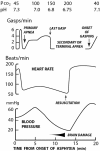A Global View of Neonatal Asphyxia and Resuscitation
- PMID: 31850287
- PMCID: PMC6902004
- DOI: 10.3389/fped.2019.00489
A Global View of Neonatal Asphyxia and Resuscitation
Abstract
Birth asphyxia (BA), assumed to be related to intrapartum related hypoxia-ischemia, accounts for one million neonatal deaths annually. In the low resource setting BA is usually defined as a failure to initiate or sustain spontaneous breathing at birth. In the resource replete setting BA is a biochemical definition related to impaired gas exchange, due to interruption of placental blood flow (PBF). An umbilical arterial pH <7.00 referred to as severe fetal acidemia, reflects a degree of acidosis, where potential risk of adverse neurologic sequelae is increased. However, even with this degree of acidemia, the likelihood of mortality or adverse neurologic sequelae remains low. The aim is to focus on the definition of BA in the low resource setting, and compare it to the diagnosis in the resource replete setting, highlighting the importance of interruption of placental blood flow as it relates to morbidity and mortality. With asphyxia, the fetus aims to redistribute cardiac output to protect more vital organs e.g., brain, myocardium, and adrenal gland at the expense of decreased flow to organs such as kidney or intestine. In an experimental newborn model, animals subjected to asphyxia immediately develop primary apnea with bradycardia sustained blood pressure and normal pH. Recovery of respirations follows basic interventions, i.e. stimulation coupled with reversal of asphyxia. However, if asphyxia is sustained, secondary apnea manifests with bradycardia, hypotension, and pH <7.00. More intensive resuscitation including bag mask ventilation ± intubation ± cardio-pulmonary resuscitation may be necessary for correction upon reversal of asphyxia. Identification of a severely acidemic state (cord arterial pH < 7.00) in the newborn, may help to differentiate the truly asphyxiated intrapartum related cases that result in mortality, from those cases where mortality is related to delay in or ineffective basic resuscitation.
Keywords: apnea at birth; birth asphyxia; global health; hypoxia-ischemia; resuscitation.
Copyright © 2019 Moshiro, Mdoe and Perlman.
Figures
References
-
- Wang H, Liddell CA, Coates MM, Mooney MD, Levitz CE, Schumacher AE, et al. . Global, regional, and national levels of neonatal, infant, and under-5 mortality during 1990-2013: a systematic analysis for the global Burden of Disease Study 2013. Lancet. (2014) 384:957–79. 10.1016/S0140-6736(14)60497-9 - DOI - PMC - PubMed
-
- Levels and Trends in Child mortality 2019 Estimates developed by the UN Interagency Group for Child Mortality Estimation. Availble online at: https://www.unicef.org/media/60561/file/UN-IGME-child-mortality-report-2... (accessed October, 2019).
Publication types
LinkOut - more resources
Full Text Sources


